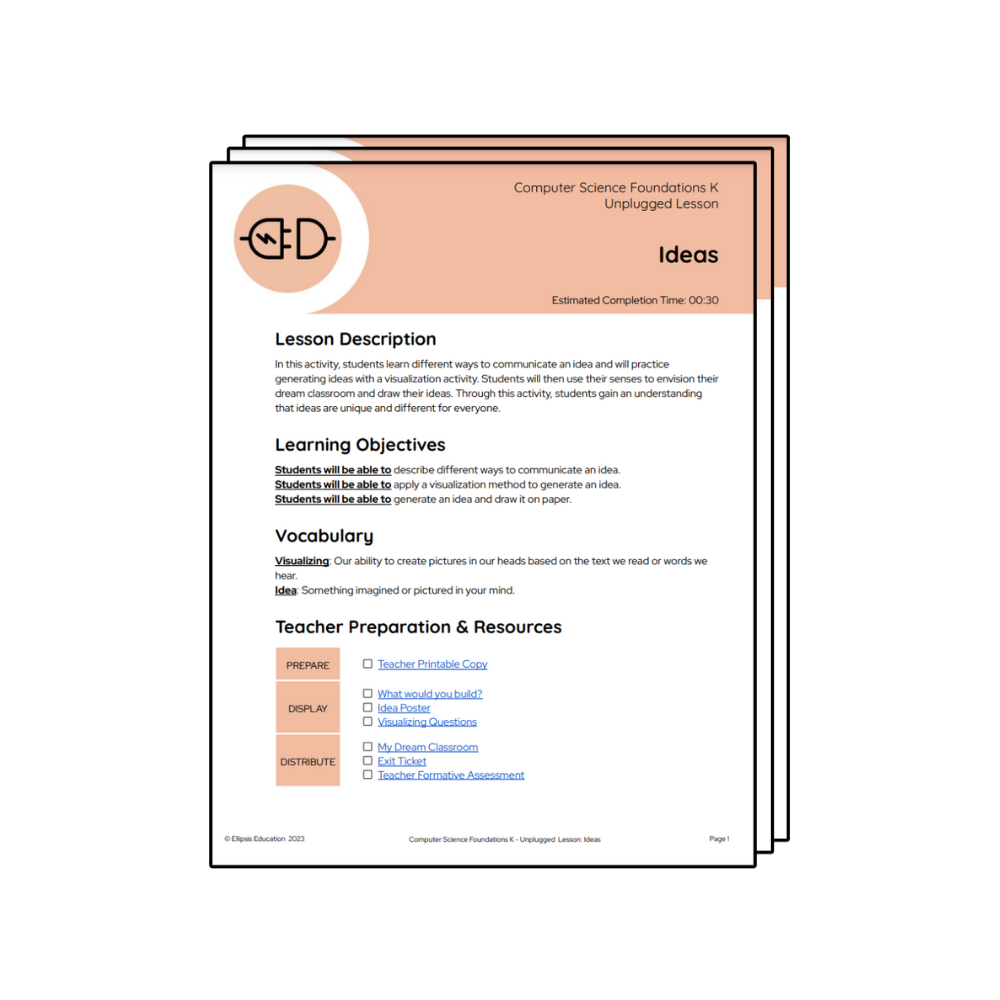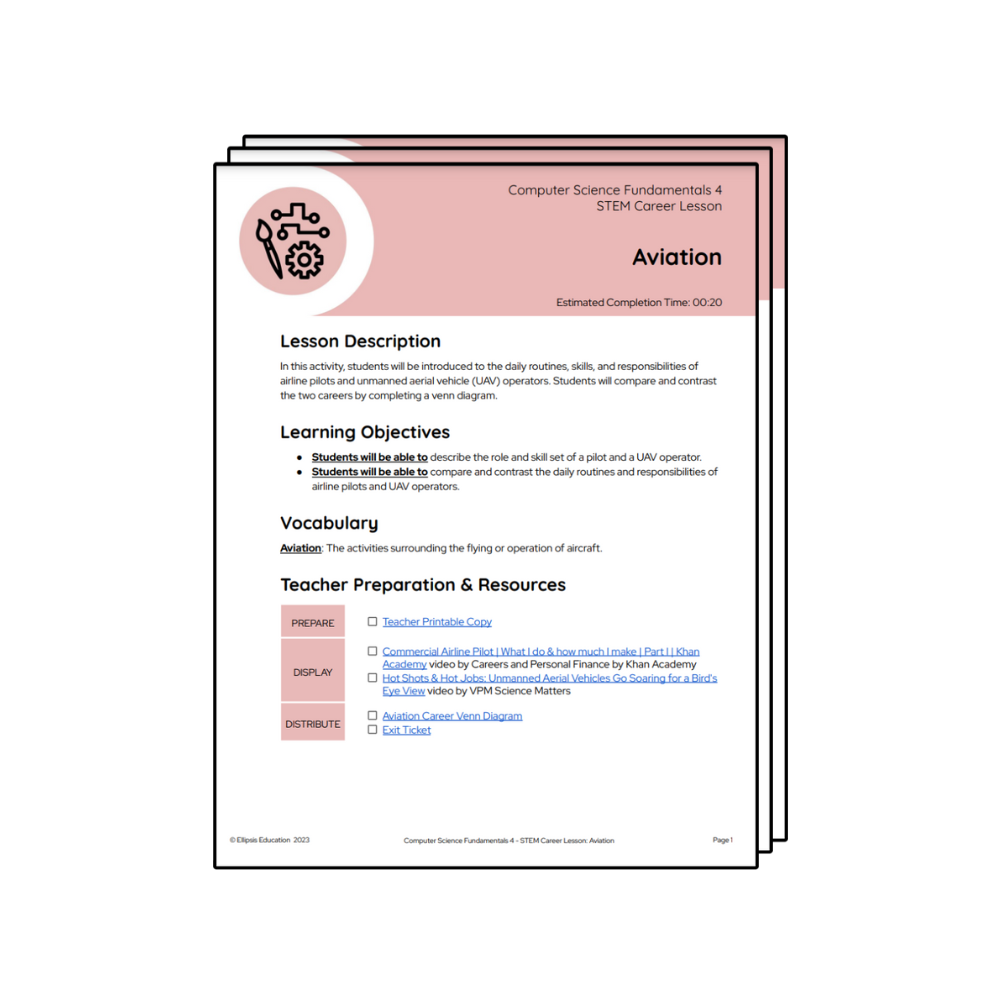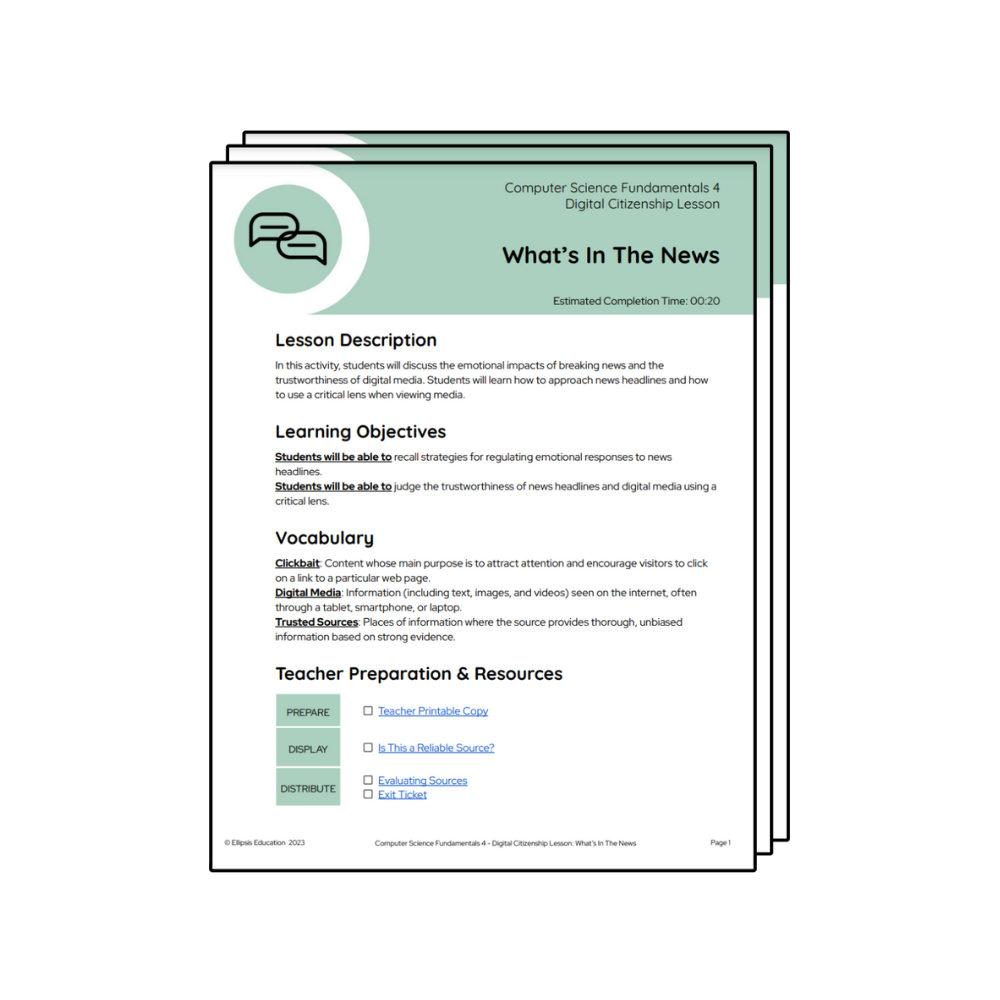Critical Thinking Curriculum
When students are able to think critically, education becomes a lot more meaningful. Ellipsis Education has computer science courses that help develop this key skill. We’re different because we have a full curriculum, not just stand-alone activities, that provide sequencing and context.
Teaching Critical Thinking with Ellipsis

Any Teacher Can Teach
From scripted lesson plans to robust training to continuous learning, Ellipsis helps teachers build confidence and capacity.

Everything in One Place
The Curriculum Delivery Platform houses all your computer science lessons – no more piecing together free resources.

Teacher-Led
Just like any reading or math curriculum, Ellipsis leverages your best resource: teachers.

Beyond Coding
Ellipsis lessons develop the attitudes, knowledge, and skills necessary to thrive – in academic settings and beyond.
Teaching Critical Thinking
Download a free lesson plan from Ellipsis Education to use in your classroom.

Idea Generation
In Idea Generation, students learn to communicate an idea and practice generating ideas with an activity.

Aviation
In Aviation, students will explore the duties of two different roles within the aviation field.

What’s in the News?
In What’s in the News, students will discuss breaking news and the trustworthiness of digital media.
Ready to develop your students’ critical thinking skills?
Computer science courses from Ellipsis Education can help. We ensure teachers have the curriculum, resources, and support they need to confidently teach computer science – and critical thinking.
